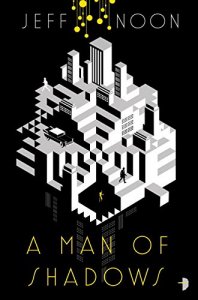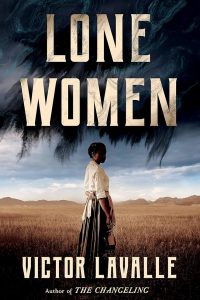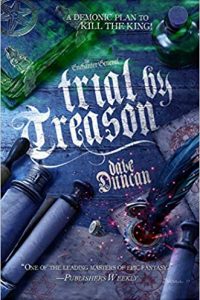Paul Di Filippo reviews Jeff Noon
A Man of Shadows, by Jeff Noon (Angry Robot 978-0-85766-670-3, $14.99, 352pp, trade paperback) August 2017
 Even for a reader old enough to have lived through the year 1993 and its associated fantastika publications, that period now seems impossibly distant and alien, an era akin to the Enlightenment or the Renaissance–or maybe the Dark Ages, given one’s particular slant on the past. For younger readers, the events and atmosphere of nearly twenty-five years ago must seem positively Precambrian. True, many folks active then–Nancy Kress, Kim Stanley Robinson, Walter Jon Williams, Joe Haldeman, Stephen Baxter, Connie Willis–are still writing today as well. But so many other prominent figures of that period have left us: Brian Aldiss, Steve Utley, Neal Barrett, Charles Sheffield. (I’m being inspired by the table of contents from Gardner Dozois’s eleventh Year’s Best that came out in 1994, by the way.)
Even for a reader old enough to have lived through the year 1993 and its associated fantastika publications, that period now seems impossibly distant and alien, an era akin to the Enlightenment or the Renaissance–or maybe the Dark Ages, given one’s particular slant on the past. For younger readers, the events and atmosphere of nearly twenty-five years ago must seem positively Precambrian. True, many folks active then–Nancy Kress, Kim Stanley Robinson, Walter Jon Williams, Joe Haldeman, Stephen Baxter, Connie Willis–are still writing today as well. But so many other prominent figures of that period have left us: Brian Aldiss, Steve Utley, Neal Barrett, Charles Sheffield. (I’m being inspired by the table of contents from Gardner Dozois’s eleventh Year’s Best that came out in 1994, by the way.)
But more crucially, not only were a whole host of prominent 21st-century writers yet unpublished, but also entire literary movements and magazines and publishers and vast controversies and revanchist attitudes from 2017 barely existed. Why, cyberpunk was arguably then still the Last Big Thing. And the larger world outside the genre was unimaginably different, with the World Wide Web barely born, and its first handmaiden, Netscape’s Navigator browser, still a year away from release. The genre and the world at large were shaped and contoured and mediated by now-antique modalities and platforms and beliefs.
A better time? A worse? Different but equivalent? I shall refrain from offering an opinion.
Certainly, though, any year that saw the appearance of Jeff Noon’s first novel, Vurt, a slipstreamy, psychedelic, gonzo extravaganza that won the Clarke Award, cannot be dismissed as negligible. With roughly nine more books of admirable quality following in those twenty-five years, Noon has not been idle. Yet, somehow, it seems to me, he has never quite reclimbed the peak of public acclaim marked by Vurt. Perhaps his new book will garner its due share of fresh attention. While Vurt was undeniably the in-your-face work of a brash wunderkind, A Man of Shadows is arguably even better: the product of a more mature, surer writer with less desire to awe the reader for the sheer sake of showing off his chops, and more intent on producing emotional resonances, more vivid storylines, and imparting whatever hard-earned wisdom the writer has garnered.
The first thing to convey is the book’s central engine: simple, yet offering immense territory and narrative possibilities. Our setting is a city divided in two. One half of the metropolis is Dayzone, a place of perpetual brightness, created by a kludgy aerial canopy of limitless electric bulbs of all sorts. Lacking any of the common referents of passing time, the inhabitants are free to indulge in designer timelines centered on business pursuits or pleasure or other themes. Perhaps, speculation goes, every individual will eventually exist on a unique continuum. Special rooms are amped up with even more than usual brilliance to provide total saturation of delicious photons.
The other half of the city is, of course, Nocturna, a land of perpetual darkness, save for the bare minimum of pale lighting. Here, navigation is achieved by charting the stars that show down the avenues and streets.
Many people inhabit, alternately, both parts of the city. But one cannot simply walk back and forth. The halves are separated by Dusk, a land of strange properties, reputed to house the dead, or other specters. Special trains take citizens from Dayzone to Nocturna, and vice versa.
This place, by the way, is part of our world in the year 1959, as indicated by shared cultural tokens, yet existing off some spurline of reality.
Our hero is one John Henry Nyquist, a private eye. His current assignment: find a runaway heiress named Eleanor Bale. It should be mentioned here that Noon deploys the archetypes of the Chandleresque noir novel intimately and deftly. All the standard tropes and personages and situations of the mode are found here: the greedy, amoral father; the shattered emotional mother; the scummy drug dealer; the quirky servants and clerks and functionaries; the gruff cops. But they are reinvigorated both by the uniqueness of the shaping conceit they inhabit, and by Noon’s attention to unique details and the care he lavishes on the depiction of even the slightest figure.
Nyquist, of course, as hero, receives the most elaboration, with Eleanor following. He is a rough case. Personal tragedies from childhood onward have left him shattered but resilient, seeking to earn a buck while helping people. But this case will finally break him down. Eleanor Bale, when he encounters her, begins to exert a strange hypnotic pull on Nyquist (whose name, I like to fancy, resembles “night quest”). The case assumes personal meaning. He loses her, but tracks her down in Dusk. There, he and she are witness to a strange murder. Nyquist takes control of Eleanor and delivers her to her father. But he cannot let the case go. Strange perceptions–perhaps induced by the time-bending drug, kia–are coming to dominate his mind. Losing his grip on reality, wracked physically, pulled amongst different factions, Nyquist has two goals: to protect Eleanor from what seems to be a predestined doom, and to unriddle the truth of her abnormal nature.
The announced fact that Nyquist will return in a sequel, The Body Library, will reassure us that he survives. But the nature and dangers of his journey will nonetheless demand much from him.
What Noon has achieved here is a masterful and ultimately unique synthesis and extension of a few other allied works in the SF genre. One could point to Alex Proyas’s film from 1998, Dark City, as a useful marker. Roger Zelazny’s Jack of Shadows contributes a little flavoring, as do Steve Aylett’s Beerlight quartet and the Interzone segments of Naked Lunch. Noon’s mysterious land of Dusk might bring to mind M. John Harrison’s warped spacetime of the Kefahuchi Tract Trilogy. And most recently, of course, we must point to China Miéville’s The City & the City, for its depiction of an urban space divided both physically and psychologically. In fact, Noon’s book certainly must be included in any ongoing roster of the New Weird.
One of Noon’s strengths from the outset of his career has been his ability to deliver surreal, imagist, outré sights and actions. He continues in this vein here, giving us unforgettable visions, sometimes almost throwaway yet still evocative, sometimes central to his themes and the plot development. Here is an idle moment:
Nyquist walked away from the parked car. He had brought along a more powerful torch this time, and he had no intention of getting too close to the fogline, but still, icy fingers started up his spine as the first swirls of dusk appeared in the air. The evening sky was painted in many different shades of grey except for where the yellow moon floated half seen in the distance. There was much speculation about this moon, one of many that occupied different areas of Dusk. It was common knowledge that this particular orb was the giant neon logo atop the old Luna Insurance office tower, a building long since given up to the dusk. But who or what was it that kept the moon aglow all these years? It was just one more mystery of the twilight.
Nyquist stopped. He had reached the Fade Away weather station with its weird-looking instruments and measuring devices. Close up, he found the instruments to be even stranger than he remembered; the spindly elongated structures looked more like abstract sculptures, or primitive totems. His torch beam flickered across the various decorations that had been added to the poles and collecting dishes: mirror shards, lenses taken from cameras and sunglasses, polished shapes cut from aluminium foil, fragments of coloured glass. Fine sparkling chains hung from steel rods, each one strung with silver cogs and springs taken from the movements of clocks and pocket watches. Numerous cobwebs were strung between the struts, each dotted with dew, and each containing its own guardian, a bulbous orange-bellied spider unlike any other that Nyquist had ever seen. The whole station glittered with light in ever-transforming patterns, a magical effect; and yet, when the torch beam moved away, all of this splendour was lost to the gloom.
The Moon an old advertising sign. How perfect!
The tactility and sensory depth of his environments are rich and satisfying. Yet Noon also delivers acute psychological perceptions as well, sometimes couched in almost Ballardian terms: “Nyquist felt he was reading a journal of his own madness.”
In the end, the fusion and bleed-through of inner and outer states, the mix of action and hallucination, past and present, self-reflection and compulsions give us a book that is at once dream-like and yet utterly grounded in some undeniably solid sphere of existence.
Jeff Noon has walked through some strange lands during the quarter of a century since his first book, and has kindly consented to take us along.








